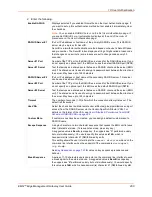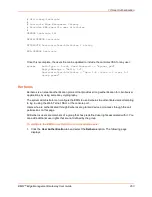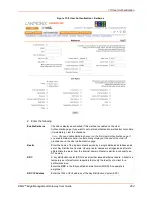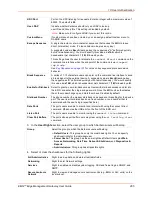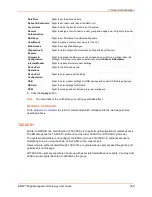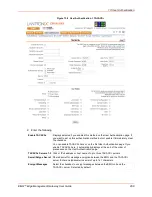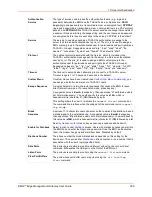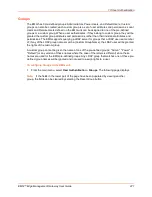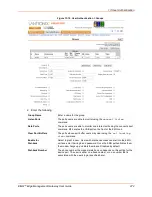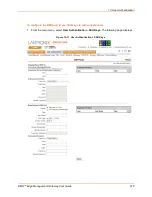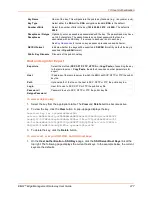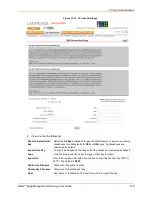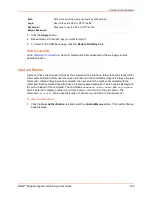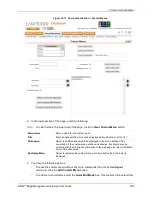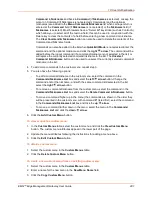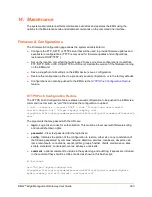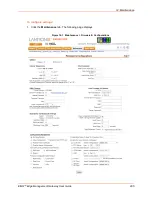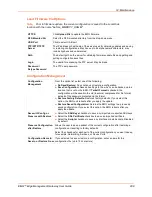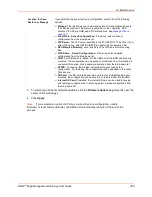
13: User Authentication
EMG™ Edge Management Gateway User Guide
274
To view or update a group:
1. In the
Groups
table, select the group and click the
View Group
button. The group attributes
and permissions will be displayed in the lower section of the page.
2. Modify the group attributes and permissions and click the
Edit Group
button.
To delete a group:
1. Select the group in the
Groups
table.
2. Click the
Delete Group
button.
Group Commands
Go to
to view CLI commands which correspond to the web page entries
described above.
SSH Keys
The EMG can import and export SSH keys to facilitate shared key authentication for all incoming
and outgoing SSH connections. By using a public/private key pair, a user can access multiple
hosts with a single passphrase, or, if a passphrase is not used, a user can access multiple hosts
without entering a password. In either case, the authentication is protected against security attacks
because both the public key and the private key are required to authenticate. For both imported
and exported SSH keys, the EMG unit supports both RSA and DSA keys, and can import and
export keys in OpenSSH and SECSH formats. Imported and exported keys are saved with the
EMG configuration, and the administrator has the option of retaining the SSH keys during a reset
to factory defaults.
The EMG unit can also update the SSH RSA and DSA host keys that the SSH server uses with
site-specific host keys or reset them to the default values.
Imported Keys
Imported SSH keys must be associated with an EMG local user. The key can be generated on
host "MyHost" for user "MyUser," and when the key is imported into the EMG unit, it must be
associated with either "MyUser" (if "MyUser" is an existing EMG local user) or an alternate EMG
local user. The public key file can be imported via SCP, SFTP, or FTP; once imported, you can
view or delete the public key. Any SSH connection into the EMG unit from the designated host/
user combination uses the SSH key for authentication.
Exported Keys
The EMG can generate SSH keys for SSH connections out of the EMG for any EMG user. The
EMG retains both the private and public key on the EMG unit, and makes the public key available
for export via SCP, SFTP, FTP, or copy and paste. The name of the key is used to generate the
name of the public key file that is exported (for example, <keyname>.pub), and the exported keys
are organized by user and key name. Once a key is generated and exported, you can delete the
key or view the public portion. Any SSH connection out of the EMG for the designated host/user
combination uses the SSH key for authentication.
Содержание EMG 8500
Страница 1: ...Part Number PMD 00008 Revision A October 2019 EMG Edge Management Gateway User Guide EMG 8500 ...
Страница 69: ...6 Networking EMG Edge Management Gateway User Guide 69 Figure 6 2 Network Network Settings 2 of 2 ...
Страница 302: ...14 Maintenance EMG Edge Management Gateway User Guide 302 Figure 14 12 About EMG ...

